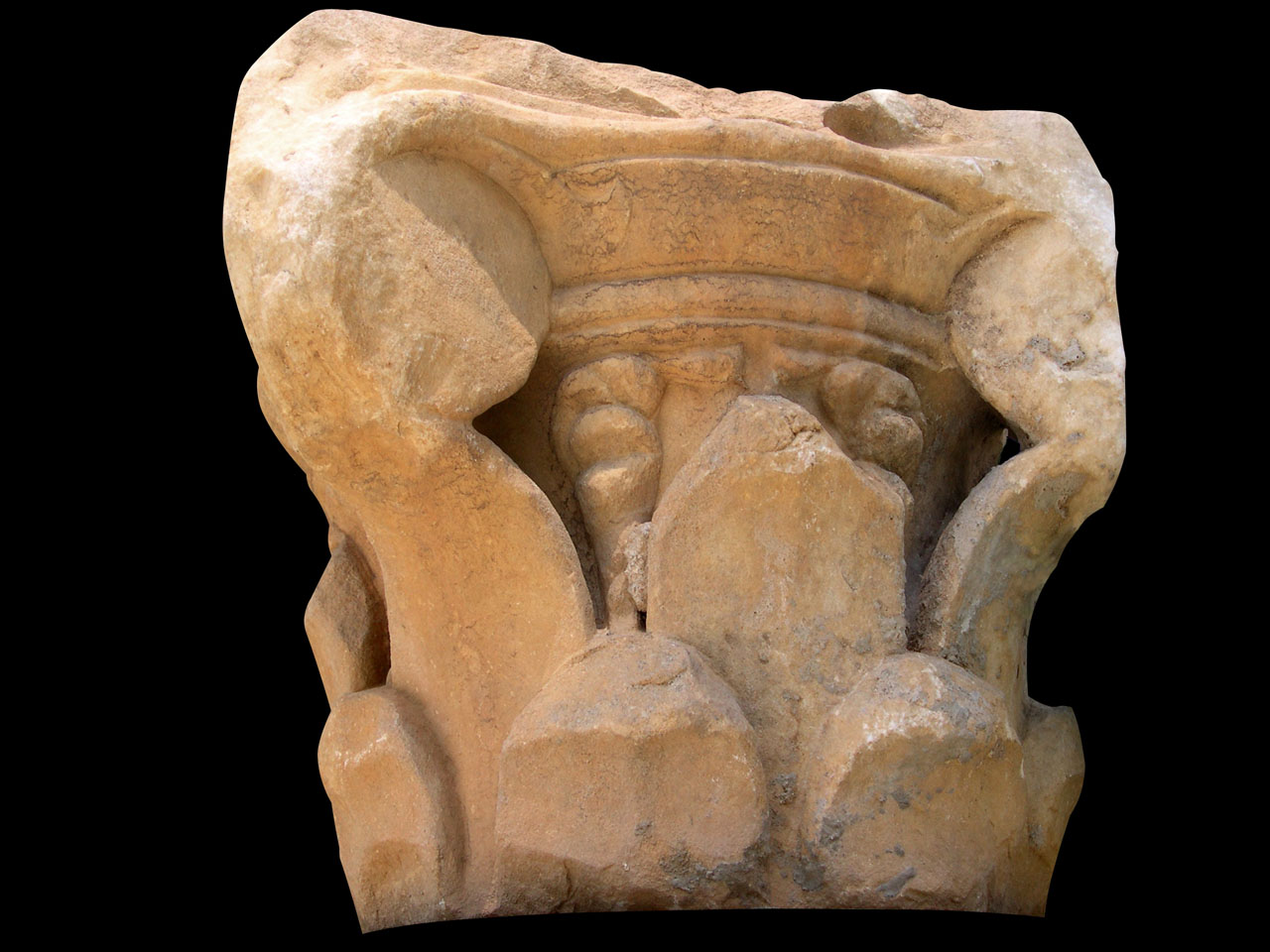White marble
Tot. h. 35 cm; lower diam. 25 cm; max. w. abacus’ side 36 cm
First half of the III cent. AD
Composite column capital with plain leaves
Composite capital with plain leaves, characterized by a kalathos (h. with rim 21 cm) dressed with two crowns of plain leaves (h. of first crown 8.3 cm; of second crown 17 cm), devoid of the vegetal features of the acanthus leaf proper; they are well outlined, with curved top and central rib; between the leaves of the second crown appear the shapes of the rosettes, typical of the Composite design though here schematically rendered.
The channel of the volutes is treated like a plain oblong element and the volutes are all the same flat and with a circular disc shape without the carved spiral (diam. 10 cm); the part comprised within the lower rim and the kalathos is void.
From the channel of the volutes stem the plain, highly simplified half-palmettes, whose curved contour is slightly projecting over the surface of the echinus; the latter (alt. 3.5 cm) is plain, not carved with the Ionic ovolo, just like the following astragal (h. 1.5 cm). The molded abacus (h. 6.2 cm) has broken edges, while at the centre of each side there remain the traces of the rectangular bulk acting as a abacus rosette.
This artefact, thus, shows the canonical elements proper of a Composite capital with plain leaves, yet we must note some important characteristic features, regarding both composition and typology, that set it chronologically within the first half of the III century AD (Type 1, Variant 1). The carving is crisp, with the discs of the volutes well detached from the kalathos; the half-palmettes, though plain and devoid of the lobes, have the upper margin above the echinus thus occupying the channel of the volutes; last, the leaves have a v-shaped section forming the central rib, while the simply roughed-out rosettes end just below the kalathos rim.
Thus, our example fits well in the first half of the III century AD for the presence of some typological elements that will disappear in the later Composite capitals with plain leaves.







